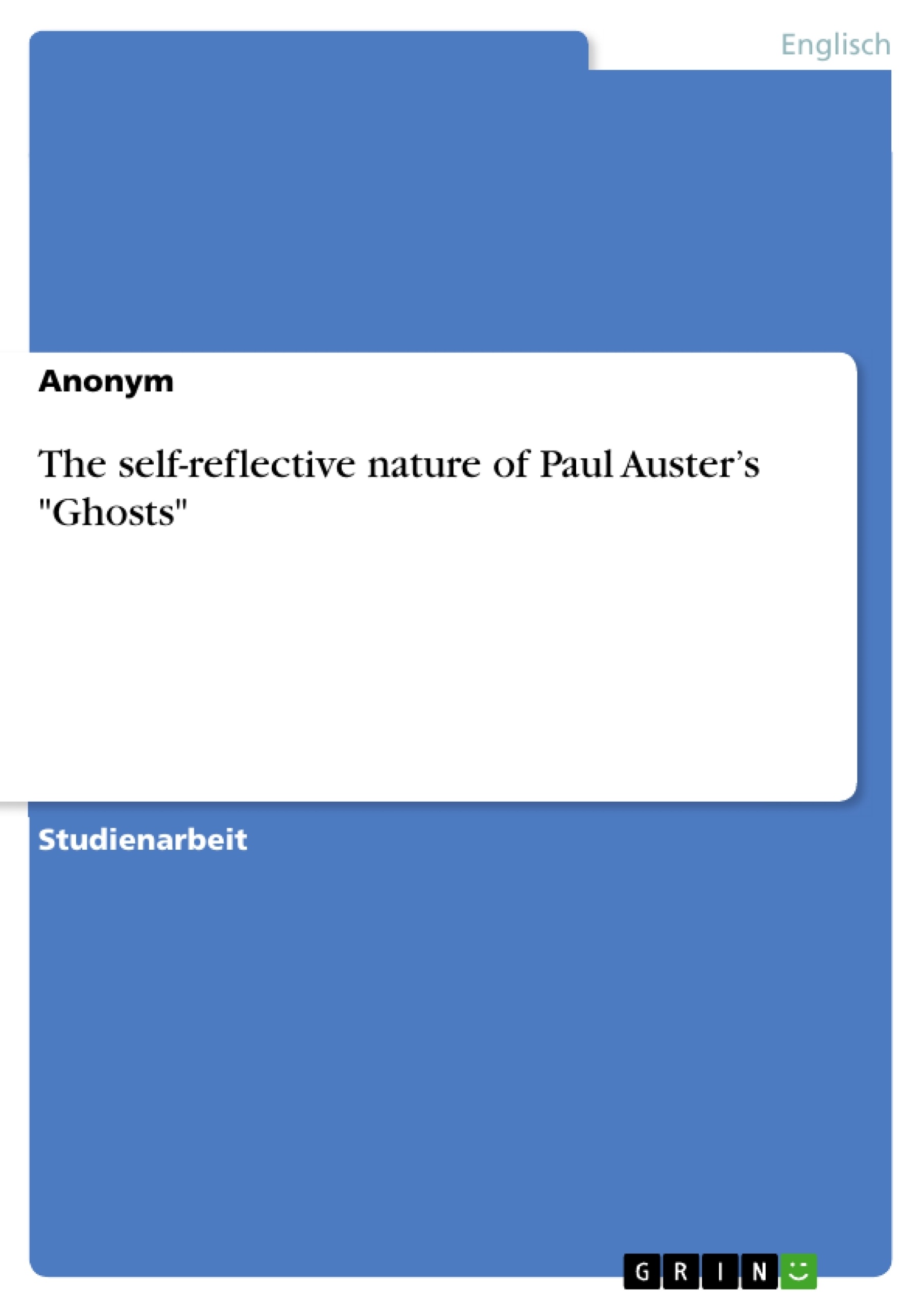This paper deals with the self-reflective nature of Paul Auster’s Ghosts1. Firstly, examples will be stated how the text alludes to its own fictional nature. Moreover, it will be shown how the reader has to read between the lines in order to obtain the novel’s deeper meaning.
Inhaltsverzeichnis
- Introduction
- Fiction or Fact?
- The Creating and Closing of Gaps
- Between Fiction and Reality
- Masks and Camouflage
- The Escape of Authorial Control
Zielsetzung und Themenschwerpunkte
Dieser Essay untersucht die selbstreflexive Natur von Paul Austers "Ghosts". Er zeigt auf, wie der Text auf seine eigene fiktive Natur anspielt und wie der Leser zwischen den Zeilen lesen muss, um die tiefere Bedeutung des Romans zu erfassen.
- Die Verschmelzung von Fiktion und Realität in der Erzählung
- Die Rolle des Lesers beim Erschließen der Lücken in der Geschichte
- Die Metafiktionale Natur der Geschichte und ihre Bedeutung für die Interpretation
- Die Grenzen zwischen Autor, Erzähler und Figur
- Die Bedeutung der Selbsterkenntnis und der Überwindung von Kontrollmechanismen
Zusammenfassung der Kapitel
- Introduction: Der Essay führt in die Thematik der Selbstreflexion in Paul Austers "Ghosts" ein und skizziert die Analyse der fiktiven Natur des Romans.
- Fiction or Fact?: Dieses Kapitel untersucht, wie der Autor mit der Glaubwürdigkeit der erzählten Fakten spielt und den Leser so an die fiktive Natur des Romans erinnert.
- The Creating and Closing of Gaps: Der Essay erörtert, wie der Autor Lücken in der Geschichte schafft und schließt, und wie der Leser aufgefordert ist, diese Lücken mit seiner eigenen Fantasie zu füllen.
- Between Fiction and Reality: Dieses Kapitel analysiert, wie der Protagonist Blue in "Ghosts" die Grenzen zwischen seiner eigenen Realität und der fiktiven Welt des Romans erfährt und wie er mit diesem Konflikt umgeht.
- Masks and Camouflage: Der Essay beleuchtet, wie die Figuren in "Ghosts" Masken und Tarnung verwenden, um ihre wahren Absichten zu verbergen und wie diese Elemente die fiktive Natur des Romans unterstreichen.
Schlüsselwörter
Die Analyse von Paul Austers "Ghosts" befasst sich mit den Themen der Metafiktion, der Selbstreflexion, der Verschmelzung von Fiktion und Realität, der Rolle des Lesers beim Erschließen der Lücken in der Geschichte, den Grenzen zwischen Autor, Erzähler und Figur sowie der Bedeutung der Selbsterkenntnis und der Überwindung von Kontrollmechanismen.
- Arbeit zitieren
- Anonym (Autor:in), 2009, The self-reflective nature of Paul Auster’s "Ghosts", München, GRIN Verlag, https://www.grin.com/document/176801



